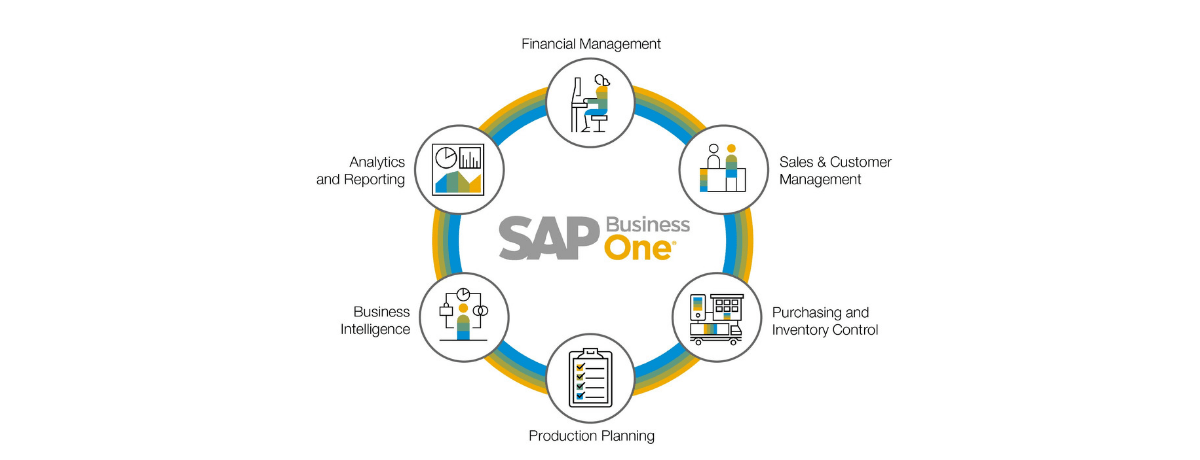SAP Business One Best Practices in Inventory Management

SAP Business One Best Practices in Inventory Management is the mechanism to monitor the flow of goods from supplier to warehouses and from warehouses to shopping floors or retail stores. It’s impossible to undermine the importance of an efficient and streamlined inventory process which is no less than the backbone of any trading or manufacturing business. Inventory management is perhaps the most vital aspect of an enterprise which directly affects the efficiency and profitability of any enterprise. A poorly managed inventory can be the sole reason for the failure of an enterprise. To manage this significant aspect of a business, it is essential to choose the best ERP software available in the market for Inventory Management.
SAP Business One outstanding abilities in Inventory Management make it an obvious choice for enterprises to strengthen and streamline their crucial inventory processes. SAP Business One has already helped several enterprises across the globe to transform their inventory management into an extremely efficient, strategic, and profitable component of their business.
SAP Business One is packed with loads of features which can enhance the inventory management capability of an enterprise. Some of these features have been discussed below:
Optimized Inventory:
SAP Business One Best Practices in Inventory Management optimizes your inventory to the next level. It can serve detailed information about the items lying in the warehouse with pinpoint accuracy, enabling hassle-free transfers. SAP B1 is a boon for distribution businesses as it can track product movements in the inventory to identify the most profitable products. Similarly, it can identify less popular products to liquidate them timely, thus saving money and storage space.
Real-time Inventory Data Management:
Integrating a bunch of Internet-connected scanners and devices with SAP Business One, you can automatically track when the item arrived in your inventory, where it has been stored, get updated when it is moved to another location within your facility (or even between warehouses), and when it left your inventory.
This means real-time access to information on the location of specific inventory from any device, regardless of whether they are in the head office, or on the warehouse floor.
Better Stock Movements Management:
SAP B1 and SAP Business ByDesign systems record the Good receipts and Goods issued in the form of material documents. Each material document is created with a unique number and can be tracked easily. Not only the logistics but financial documents are also maintained for these movements. As stock levels change in the inventory, the numbers are updated in the system. So that different departments and decision-makers are aware of the latest stock levels.
Sophisticated Costing Features:
SAP Business One makes it possible to maintain prices in different currencies and units such as buying in cases and selling in individual bottles.
Material Requirements Planning:
Any business especially a manufacturing unit must consistently ensure that. Their stocks of various raw materials are at optimum levels to avoid the costly stock-out situation. Therefore, Doing this exercise manually on a day to day basis can be a cumbersome and risk-taking affair.
In addition, SAP Business One supports businesses right through material planning, and purchasing. And, help configure reorder points depending on average material consumption cycles. Setting correct reorder points can help the business to avoid unnecessary purchases and avoid inventory costs.
SAP Business One can serve detailed information regarding items needed and when they would be consumed. Its order recommendations take account of expected lead times. It provides the optimal time to purchase an item so that it arrives on time.
Production and Warehouse Reports:
SAP Business One has amazing reporting functionalities like SAP Crystal Reports. This allows the generation of an inclusive set of reports as per the requirement of warehouse and production.
Conclusion
we can easily conclude that SAP B1 is hands down the best ERP software out there. It can manage even the most complex of inventory requirements of an enterprise. It helping them maintain optimum inventory levels, save on purchase costs, and make informed decisions.

